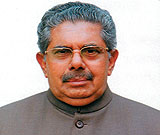 |
Investment
Indian Americans can invest more in India: Ravi |
The role of Indian Americans in the India’s economic growth has been below potential and much of the inward remittances in India have come from the Gulf, says Overseas Indian Affairs Minister Vayalar Ravi.
“If you look at the diaspora’s investments in India, the success is even lower,” Ravi told the Mini-Pravasi Bharatiya Divas (PBD), co-hosted by his ministry and the Confederation Indian Industry (CII) here as part of the Incredible India@60 event.
The cumulative foreign direct investment (FDI) into India by NRIs was $8 billion and constituted less than 5 per cent of the total FDI in the country, he told the gathering at the packed Pier Sixty in Manhattan.
Of the $23 billion in foreign remittances from overseas Indians last fiscal year, nearly half came from just five million NRIs in the Gulf. “Clearly, this is a potential area for all of you to consider,” Ravi said.
|
|
|
|
|
|
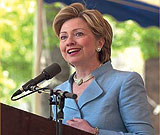
|
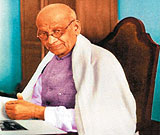
|
Leadership
US needs a leader like Sardar Patel: Hillary Clinton
|
The US today needs a leader like Sardar (Vallabhai) Patel, says Democratic frontrunner in the Presidential race, Senator Hillary Clinton.
Addressing a gathering of Indian American supporters at a fundraiser in New Jersey in Royal Albert’s Palace–the venue for the fundraiser where there’s a huge statue of Patel–Clinton: “He has been portrayed to me as a great uniter, as someone who was there when India needed a leader to put the country back together. That is what the United States needs today, someone who can put our country together, someone who works to find a common ground, and I want to be the one to do that.”
And then began a perfect Presidential pitch for a roomful of Indian American admirers. “Of course we are behind India,” Clinton said, hinting at where her leanings lay.
|
|
|
|
|
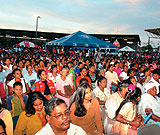
|
Immigration
Illegal immigrants from India on the rise
|
The fastest-growing group of illegal immigrants in the US doesn’t speak Spanish. They typically aren’t found at day labour sites or streaming across the southwest border into the US.
Instead, they’re working in tech companies, small businesses, as engineers or other highly skilled jobs. And they’re coming from India says a special report in the Houston Chronicle.
The profile of the illegal immigrant may need to take on a slightly more South Asian persona since a recent federal report revealed that India had the greatest percentage increase in unauthorised immigrants in the US since 2000.
Illegal immigrants from India grew to 270,000 in 2006 from 120,000 in 2000, a 125 per cent increase, according to a report late last month from the US Department of Homeland Security.
Undocumented Indians, however, remain a small segment of the total estimated population of 11.6 million illegal immigrants in the US Mexico tops the list with 6.6 million.
Experts say illegal Indian immigrants are coming here legally on visas but are overextending their stays and subsequently slipping under the radar screen of authorities.
|
|
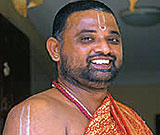 |
Academics
Hindu scriptures to be taught in Nevada College
|
In view of the expanding interest in Hinduism, India and yoga among Americans, Hinduism classes are being offered at local Truckee Meadows Community College, one of the prestigious institutions of Nevada, in November and December.
Rajan Zed, who read the historical first Hindu prayer in the US Senate in July, will teach the Bhagavad-Gita, besides “Hinduism”, “Hindu Gods and Goddesses”, and “History and philosophy of Yoga”. Currently, there are about 800 Hindu religious centres in the US, concentrated in California, New York, Texas, Georgia, Florida, Illinois, and New Jersey.
From 1,700 people in 1900, the Hindu population of Indian origin in America grew to an estimated two million now, in addition to about one million practicing Hindu-Americans of non-Indian origin. Interest in Hinduism in North America began in 1830s with Ralph Waldo Emerson and Henry David Thoreau studying Hindu scriptures like Upanishads and Bhagavad-Gita.
|
|
Immigration
‘US should abolish H1B visa to prevent reverse brain drain’ |
A leading Indian researcher has suggested that the US must abolish the H1B visa and instead issue more green cards to prevent a reverse brain drain.
Vivek Wadhwa, an executive-in-residence at Duke University’s Pratt School of Engineering, made the remarks after coming out with the “startling” statistics of a survey headed by him which found that immigrants were key founders in more than a quarter of all the engineering and technology companies set up in the US between 1995 and 2005.
Wadhwa said the study calls for substantial relaxations in US immigration policy, and made a strong case for Indians in particular, pointing out that Indians founded more engineering and technology companies in the US in the decade up to 2005 than the next four groups combined- those from the UK, China, Taiwan and Japan.
“Indians are among the best educated of all immigrant groups,” he said, adding they accounted for 26 per cent of all start-ups, about 117,000 jobs and $14 billion in revenue in 2005. |
|
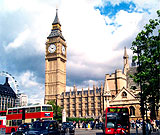 |
Immigration
Don’t know English? No entry to UK |
|
Thousands of prospective Indian immigrants will be affected by the British government’s plans to make it compulsory for skilled migrants from outside the European Union to be able to speak, write and understand English before they are allowed to enter Britain.
At present, the rule applies only to highly-skilled migrants such as doctors but the government now plans to extend it to skilled workers who want to settle in Britain. They include IT professionals, a majority of whom come from India, and workers employed in the service sector.
Indian restaurants, dependent heavily on chefs, waiters and other kitchen staff from India, will be badly hit. Under the proposed rules applicants will be required either to pass an internationally recognised English test or produce evidence that they have learnt English from a recognised institution in order to qualify for a work permit.
The proposal is part of the government’s new tough immigration controls to check alleged abuse of the system and reduce immigration levels.
Of an estimated 145,000 skilled workers who were given job permits, 51,000 were from the Indian subcontinent. In the IT sector, most of the 30,000-odd permit holders came from India.
|
|